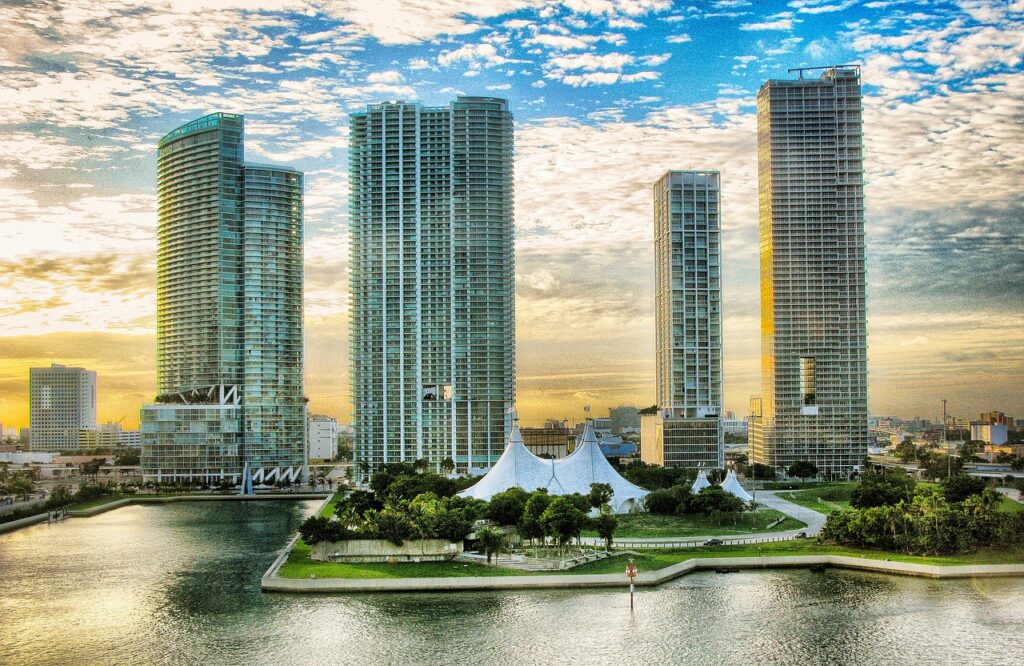Miami and South Florida have long been recognized as hotbeds for diverse economic activity, cultural vibrancy, and stunning landscapes. In tandem with this, the region’s commercial real estate market has witnessed dynamic growth and transformation. In this comprehensive overview, we delve into the key facets of the commercial real estate landscape in Miami and South Florida, offering insights into current trends, market drivers, and what makes this area a compelling destination for investors.
1. Diverse Commercial Real Estate Sectors:
The commercial real estate market in Miami and South Florida encompasses a broad spectrum of sectors, including office spaces, retail properties, industrial complexes, and hospitality venues. Each sector has its own unique dynamics, contributing to the region’s overall economic resilience.
2. International Appeal:
Miami’s commercial real estate market holds international allure, attracting investors and businesses from around the globe. The city’s strategic location as a gateway to Latin America, coupled with a diverse cultural environment, makes it a hub for international trade and commerce.
3. Booming Office Space Market:
Miami’s skyline is a testament to its thriving office space market. The city has seen significant growth in modern, state-of-the-art office spaces, catering to the evolving needs of businesses in industries ranging from finance and technology to creative services.
4. Retail Renaissance:
The retail sector in South Florida has experienced a renaissance, with a focus on mixed-use developments, experiential retail, and curated shopping experiences. Renowned shopping districts, such as Miami’s Design District and Wynwood, have become magnets for retailers and consumers alike.
5. Industrial and Logistics Expansion:
The demand for industrial and logistics spaces has surged in response to the rise of e-commerce and the need for efficient supply chain management. Miami’s strategic position as a logistics hub has led to increased investments in industrial real estate, catering to the growing demand for distribution centers.
6. Resilient Hospitality Sector:
South Florida’s hospitality sector, including iconic destinations like Miami Beach, has shown resilience and adaptability. Despite challenges, the region remains a sought-after destination for tourists, driving investments in hotels, resorts, and short-term rental properties.
7. Impact of Technology and Flex Spaces:
Technological advancements have influenced the commercial real estate landscape, with an emphasis on flexible workspaces. Co-working facilities and flexible office arrangements have become increasingly popular, reflecting the evolving preferences of businesses and professionals.
8. Sustainability and Resilience:
In response to environmental concerns and the region’s vulnerability to natural disasters, sustainability and resilience have become focal points in commercial real estate development. Green building practices and resilient design are shaping the future of South Florida’s real estate market.
9. Key Neighborhoods and Emerging Markets:
From the upscale Brickell district to the artistic vibrancy of Wynwood, understanding the key neighborhoods is essential for investors. Additionally, emerging markets such as Little Haiti and Allapattah are gaining attention for their growth potential.
Miami and South Florida’s commercial real estate market stands at the intersection of international appeal, diverse sectors, and a commitment to sustainability. As the region continues to evolve, investors and businesses alike find themselves drawn to the dynamic opportunities presented by this vibrant and resilient market. Whether it’s the flourishing office spaces, revitalized retail districts, or the strategic importance of logistics hubs, the commercial real estate landscape in Miami and South Florida is poised for continued growth and innovation.











